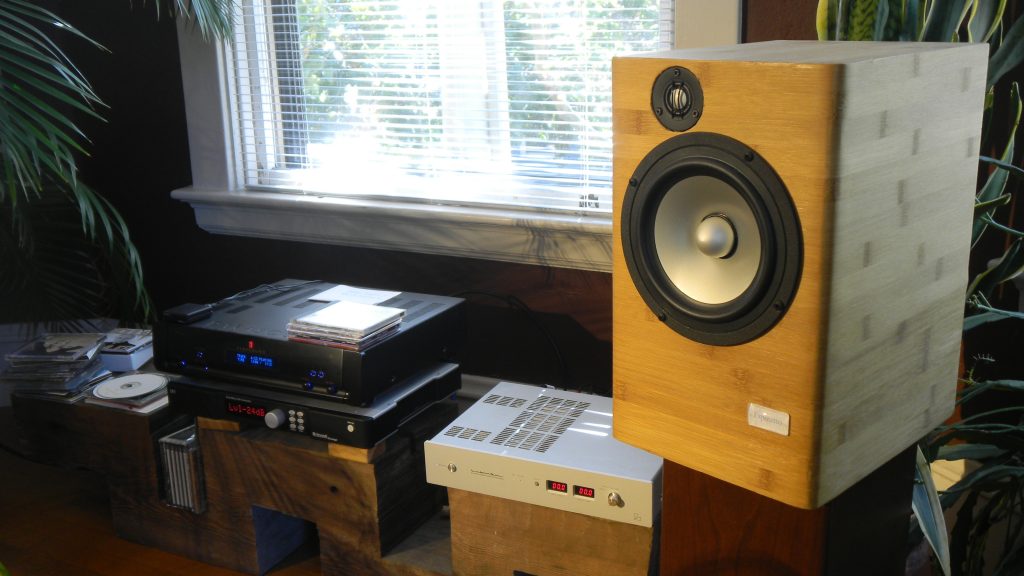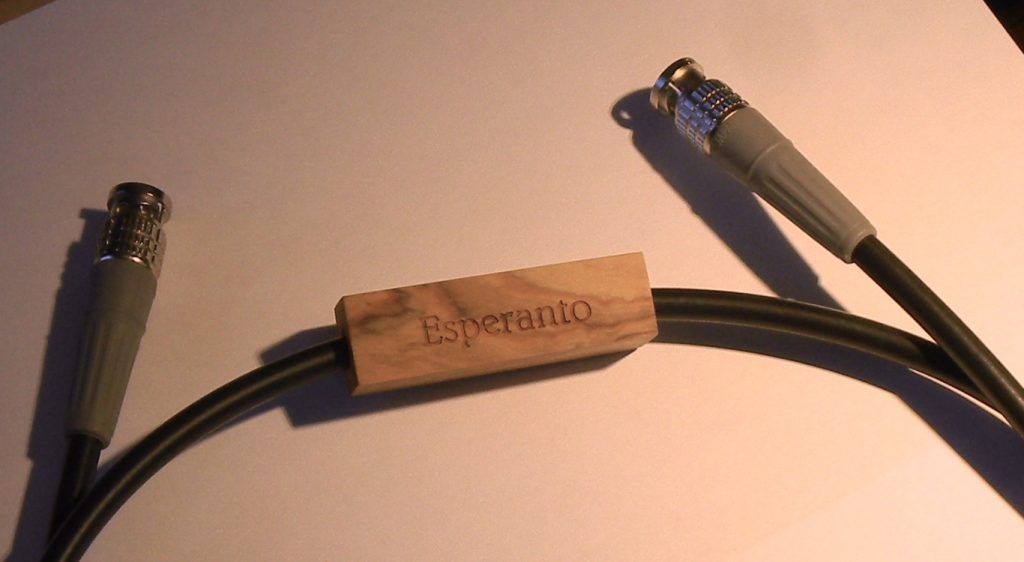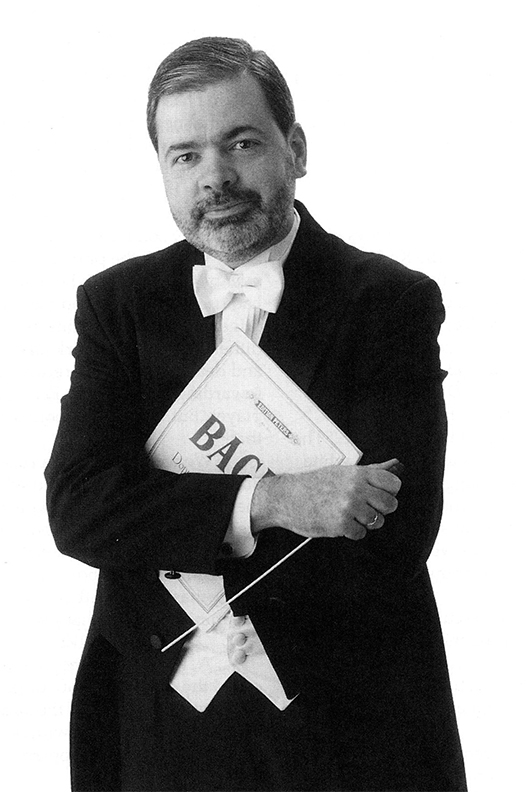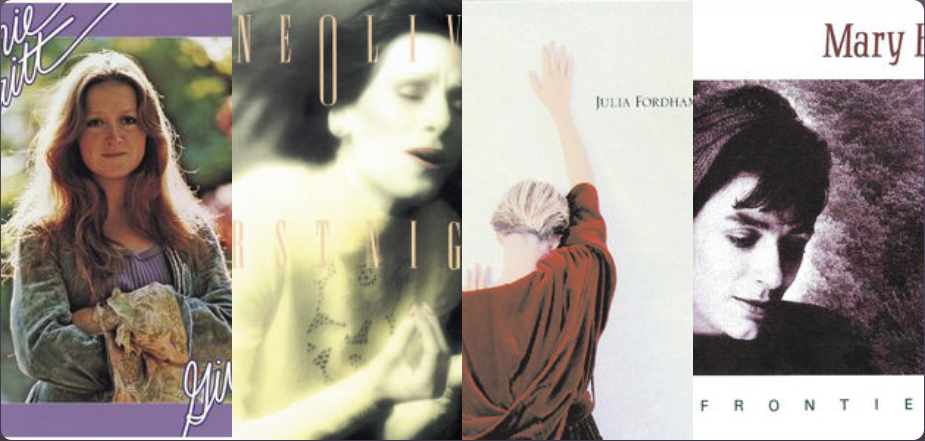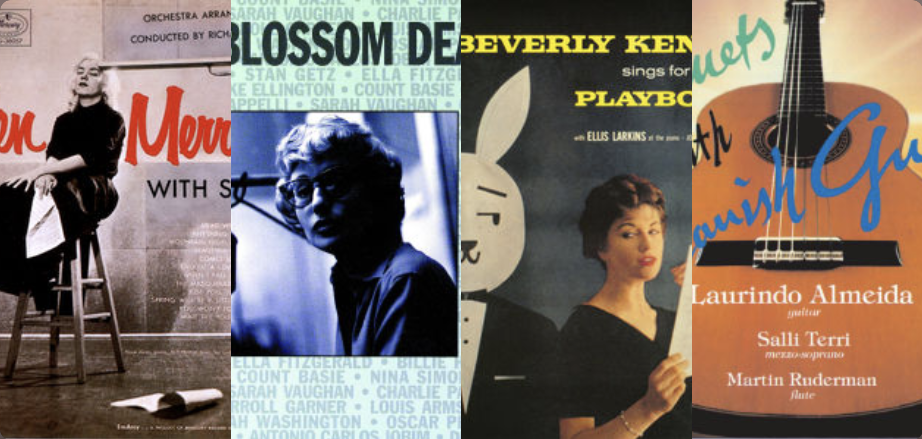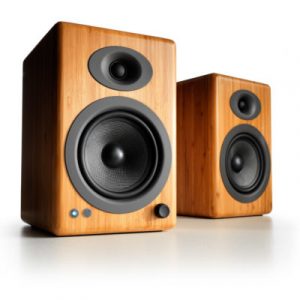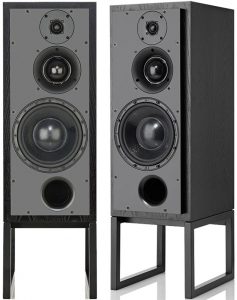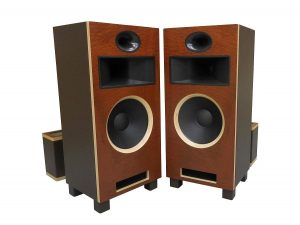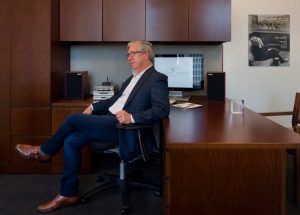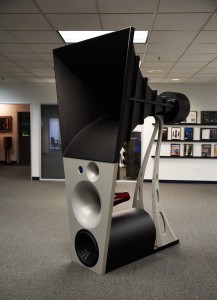We are blessed once again by some fine reflections from our good friend and brother, John Marks, he of The Tannhauser Gate fame. This time around we read his thoughts on the Graham Audio Chartwell LS6 Monitor Loudspeaker.
I always fine John's commentary to be excellent reading, a blend of audio experience, music, deep insight, and true erudition. You will too!
Dr. David W. Robinson, Ye Olde Editor
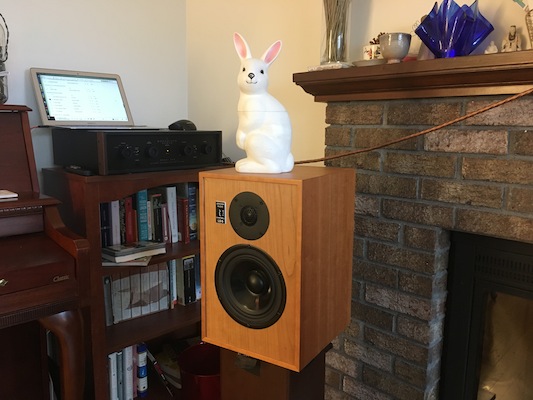
Photo by John Marks
Note: The bunny atop the LS6 is a gesture in memory of Art Dudley. I am certain that Art would have loved this loudspeaker. I think that it is one measure of Art's impact upon the high-end audio community that most people who read this review will immediately grasp much of what this loudspeaker is all about, just from reading only that.
Graham Audio's Chartwell LS6 loudspeaker is a labor-of-love audio product that is seriously competent in terms of engineering, but also characterful in terms of its presentation of music—especially the human voice. Therein lies the complexity.
The Chartwell LS6 evokes complex reactions in part because of its UK BBC "thin-wall cabinet" design heritage. However, heritage is not destiny. In any event, the LS6 is more of a "clean-sheet-of-paper" design than a slavish copy of a loudspeaker that is nearly 50 years old.
The primary engineering difference is that the LS6 is a ported-enclosure design, whereas the iconic BBC LS3/5A is a sealed-box design. Therefore the LS6 is, to me, more of an updating of the idea of a "Classic BBC-Designed Studio Monitor" than it is an updating of any particular loudspeaker.
The Chartwell LS6 deserves to be judged in comparison to its older BBC-derived relatives—but also, by today's standards as well. Either way, it is a winner. In addition, it is solid value for money.
A philosophical diversion or two follows below.
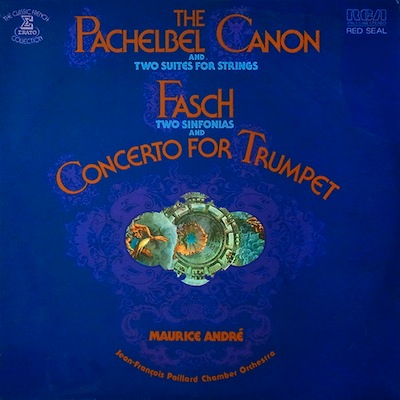
The Chartwell LS6 is a stand-mounted 2-way "monitor" loudspeaker from Graham Audio, a company founded by Paul Graham in 2011. Paul Graham then hired Derek Hughes, the son of BBC engineer Spencer Hughes and his wife Dorothy, of 1970s loudspeaker company "Spendor" fame, as a loudspeaker-design engineer.
At some point Graham Audio acquired (I assume) whatever was left of legacy loudspeaker company Chartwell, which was the builder of the first pair of BBC monitor loudspeakers I ever heard, back in 1978 or 1979, in Nashville.
I also have some of my own history with Spendor.
My first "big-ticket" loudspeaker purchase (circa 1986) was a pair of Spendor SP1s, Spendor's version of the "BBC two-cubic-foot monitor." According to what perhaps might be an "Audio Urban Legend," the SP1 was designed as a drop-in replacement for the BBC-authorized BC1 monitor, when that older loudspeaker proved to be not up to the demands of monitoring broadcasts of Bob Marley and the Wailers and other reggae groups.
IIRC, my SP1s cost $1200 the pair, from Ocean State Audio, on Thayer Street, in Providence, RI.
I had previously run through a gamut of designs from Irving M. Fried's loudspeaker company. I bought both completed loudspeakers, and later, kits; starting with the Fried Q2s I had purchased while living in Nashville.
Immediately before the Spendors, I had been using Fried's C4 kit loudspeaker 2-ways. Those did some things very well. Nonetheless, I was looking to "upgrade." I was looking for more bass extension, more overall resolving power, and more coherence.
"Coherence" means that the music is being presented (to the greatest extent possible) as a unified whole, without the high frequencies, the middle frequencies, and the bass frequencies all speaking, so to speak, with different (or, differently-timed) voices.
I first heard the LS3/5A BBC "Shoebox" Monitor LS3/5A at Nicholson's, when I was living in Nashville in the late 1970s. They were Chartwell LS3/5As, in fact. The LP that was playing was the famous RCA Maurice André Baroque trumpet-concerto recording of music of Pachelbel and Fasch. I was amazed.
The resolving power, frequency extension, and dynamics of the Chartwell LS3/5As' presentation of the trumpet's recorded sound was something I had never heard before. (BTW, there's an allegedly sealed LP of that up on eBay for the princely sum of $15. Jump on it!) Note, one of my younger brothers was a trumpet student who eventually graduated from the Boston Conservatory, so I long have had mental memory banks full of the sound of a live trumpet.
I loved the LS3/5A, but I recognized that its bass limitations made it not the loudspeaker for me. Therefore, in an effort to stay within the BBC "family," I bought the Spendor SP1s. I was happy with the SP1s until I fell in love with an obscure dynamic-panel design, the Museatex Melior Ones. Because of the Museatex loudspeakers' even greater coherence and resolving power. (The bass—not so much greater.)
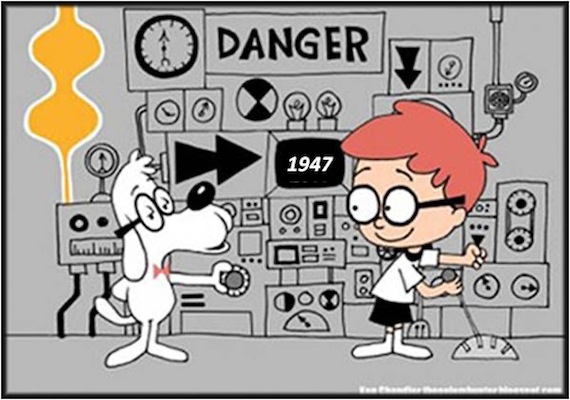
So now, but only in a sense, do we get into the WABAC machine (of "Mr. Peabody and Sherman" fame), to ponder a new loudspeaker with Spendor SP1 DNA in its family tree.
That said, I really do think that the Chartwell LS6's performance earns it the right to be considered blind, behind a scrim, as "Loudspeaker X." Just think of it and listen to it as a "new design," and decide accordingly.
The LS6's driver complement is a 6-inch woofer-mid and a one-inch soft-dome tweeter (the tweeter has a metal protection screen). Both drivers are built to Graham Audio's specifications. Claimed bass extension is -2dB at 45 Hz, which I found to be eminently credible.
The rear-ported cabinet, beautifully made and finely veneered in handsome cherry wood, measures 14.6 x 9.5 x 10.25 inches (H x W x D), for an external displacement of 1422 cubic inches. The removable grilles have very efficient "invisible" magnetic attachments. The loudspeaker is a bit on the surprisingly-heavy side, at 21 pounds each.
Stated impedance is 8 Ohms; claimed efficiency is 87dB. The LS6 is not bi-wire-able; each loudspeaker has only one pair of (high quality) binding posts. There is a front-panel toggle switch to engage +1 or +2 dB in the treble. (The "factory" setting is represented by the "0" position of the toggle.) US MSRP is $3500.
The LS6 carries on the "thin-wall" cabinet-construction tradition. Back in the late 1960s and the early 1970s, engineers at the British Broadcasting Corporation were doing fundamental research into loudspeaker design, especially the vibrational behavior of loudspeaker enclosures. That's an important consideration, because the vibrating area of a loudspeaker cabinet will be several times larger than the frontal area of the woofer.
After much experimentation in materials and construction methods, they decided that the optimum approach was not to attempt totally to defeat loudspeaker cabinet resonances; but rather to fashion an enclosure that would resonate, but as benignly as possible.
The result was a cabinet with walls half as thick (or less) as the usual loudspeaker cabinet, braced only where the panels met, and with the panels damped to tailor both the frequency and the intensity of the cabinet vibrations. The theory was that it was easier to damp a lighter vibrating mass than a heavier one; and that if all went well, the vibrations that got past the bitumen-loaded damping pads would be outside the critical upper-midrange "intelligibility zone."
Of course, 50 or so years later, massive enclosures with thick walls made from proprietary composites, or using high-tech materials such as carbon fiber, are the directions in which much of the ultra-high-end of audio has migrated. Prime examples of the former being Wilson Audio, and of the latter being Wilson Benesch.
To say the least, today, "thin-wall" construction is both in a sense well-respected, but definitely a minority enthusiasm. When my fellow audio journalist Mike Zisserson visited to hear the LS6s, Mike, who is a loudspeaker designer himself, doubtless referring to the decades-old cabinet design, smilingly said, "I am trying really hard to hate these… but I just can't!"
The short version is that the Chartwell LS6 is a very coherent, organic, well-balanced design that combines tonal smoothness and warmth with excellent resolving power, spatial detail, and bass extension. Its presentation of midrange tonal subtleties is very beguiling. The LS6's midrange is rounded and full, with a touch (but only a touch of) mellowness. Mellowness, not flabbiness.
Whether the Chartwell LS6 is the loudspeaker for you will depend upon a careful audition. And, of course, upon your associated equipment and your listening room's acoustics. And, even more of an "of course," your own musical tastes and expectations.
For me, the characterful and engagingly musical (but not really idiosyncratic) nature of the Chartwell LS6's sound brings to mind a few philosophical (or epistemological, or phenomenological) questions about the nature of music perception.
I have told this story before, but it bears repeating.
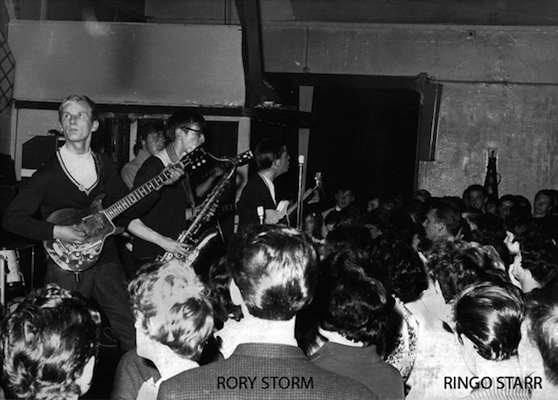
Chris Huston (left) and his Merseyside band The Undertakers, 1961, with Ringo Starr in the crowd.
Chris Huston is as soft-spoken and unassuming a chap as you would ever hope to meet, a real gentleman of the old school. He also has an amazing backstory. He and John Lennon were close friends at Liverpool's College of Art. They later had "dueling bands" that played at Liverpool's Cavern Club. Huston's band was the Undertakers, with lead singer Jackie Lomax. Like the Beatles, the Undertakers had spent time playing gigs in scrappy clubs near the Hamburg docks.
However, Huston is not just an asterisk in the music encyclopedias. He co-engineered Led Zeppelin II. He produced War's LP The World Is a Ghetto, a Billboard chart-topping album. He has produced and/or engineered more than 80 gold and platinum records.
Huston and I were discussing loudspeaker design, when he asked a question that brought me up short:
Should a loudspeaker have a personality?
It took me a moment to collect my thoughts—I had never thought of things in quite those terms. I quickly ransacked my memory for peak audio experiences, then I replied, "Yes."
Huston's reply is one of the most concise and insightful bits of audio wisdom I have ever heard:
A loudspeaker without a personality is like a song without a hook.
But that sounds as counterintuitive as it is bound to be controversial. Shouldn't we want loudspeakers to sound as neutral as possible—that is, to have no personality? Shouldn't a loudspeaker be the acoustical equivalent of "a straight wire with gain"?
In theory, yes. In practice, however, the laws of physics seem to dictate that, in designing a loudspeaker, to get this, you have to give up that. "You squeeze it here, it bulges there." Therefore, you have to pick your poison.
In loudspeaker design, there's always something you have to give up—even if it's only affordability. Furthermore, we use speakers not in anechoic chambers, but in actual rooms of actual houses. In addition, we listen, not to continuous sine-wave test tones, but to imperfect recordings of music.
At some point, loudspeaker designers must nail their colors to the mast and let the world hear what they think a loudspeaker should sound like. And that's what that loudspeaker's personality is.
However, do loudspeakers need personalities? I think Chris Huston was right. I conclude:
Too often, the price you pay for loudspeaker "neutrality"
is a subliminal disconnection from the music.
I am told that the design brief for the LS6 was to render the human voice as accurately as possible, but with more bass extension and greater dynamics than the LS3/5A. I think that that's as good a description of the LS6's personality as can be hoped for.
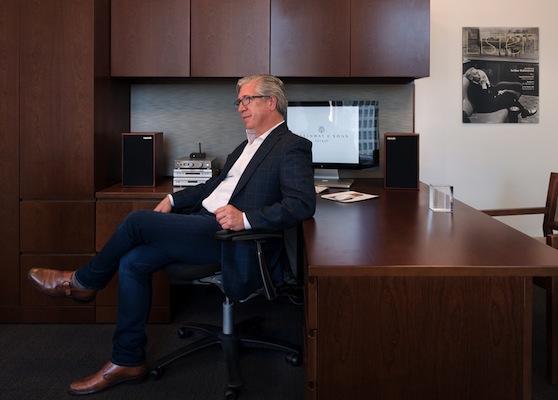
Photo of Eric Feidner at Steinway & Sons' NYC Global Headquarters by and courtesy of Wes Bender Studios. I totally love the way Eric's and Mr. Rubinstein's legs are the mirror images of each other! Way to go, Wes! And, what an amazingly clean desk Eric has!
Not incidentally, a few years back my friends at Steinway & Sons asked me to specify desktop stereo systems for the top executive offices. Given that the intended use was to have the loudspeakers within arm's reach, which also describes the setup in a BBC "Outside Broadcast" van, I selected a LS3/5A descendant, Harbeth's P3ESR. And yes, just like "Spendor," "Harbeth" is a company founded by a BBC engineer.
The LS6 was designed to slot into the Graham Audio lineup between the Chartwell-branded LS3/5 and LS3/5A models, with their four-and-a-third-inch woofers, and the Graham-branded LS5/9, with its eight-inch woofer.
Comparing the LS6 to the legendary BBC "Shoebox" LS3/5 and 5A models, a picture emerges, like so:
- The LS3/5A's 4.33-inch (110mm) woofer has a frontal area of 14.7 square inches, while the LS6's 6-inch woofer, at 28.3 square inches, is approximately 93% larger.
- The "Shoebox" cabinet (12 x 7.5 x 8 inches) displaces 720 cubic inches; the LS6 cabinet (14.6 x 9.5 x 10.25 inches), which displaces 1422 cubic inches, is 98% larger.
- At circa 14 vs. 21 pounds cabinet weight, the LS6 is 50% heavier.
- At $3500 vs. $3000 (for the Chartwell LS3/5A), the price differential is 17 percent, which I think is very fair, given that you get more than half an octave of additional bass extension.
I should note that unlike the less-expensive Harbeth "LS3/5A-Descendant" P3ESR, Graham Audio's Chartwell LS3/5A is an officially-licensed BBC product that meets the BBC's specifications in all respects (such as, birch-plywood panels, rather than veneered medium-density fiberboard). No knock on the somewhat-similar Harbeth loudspeaker; that is just to explain why the loudspeaker from Graham Audio is more expensive.
I did all my listening while powering the LS6es with Moonriver Audio's Model 404 solid-state stereo integrated amplifier, which has a rated output of 50 Watts per channel. That was a very synergistic combination—the Moonriver 404 had more than enough power, while its tonal signature really locked into the LS6es. The USB cable (from the laptop to the Moonriver 404's optional DAC card) was from Wireworld, their Starlight 8 USB 2.0 (MSRP $100/1m). The loudspeaker cables were also from Wireworld, their Mini Eclipse 8 (MSRP $660/3m pr.).
Both cable selections made decisive improvements to this wonderfully synergistic system. I think the prices asked for these Wireworld cables are eminently fair; and, Pareto-Optimal, compared to the tops of those lines. Back when I wrote the "A Stereo for Mr. Stevens" series for The Absolute Sound, the cables I ended up choosing as the Kings of the Hill were from Wireworld, and it was gratifying to hear how well their "semi-budget" cables of today perform. I am told that a next-generation USB cable is in the works, and when that becomes available I will ask for a review sample.
Most of the content I listened to was hi-res streaming from Qobuz. But I also used some of my own recordings, played back from the same Apple laptop as the Qobuz. I usually had the LS6es' treble controls in their +2 positions, because I usually listened at moderate volume levels. When I turned up the volume, I would usually nudge the toggles to the +1 or even the "0" settings, in view of our ear-brain systems' varying sensitivity to different frequencies as the sound pressure level increases.
Of course, the first tracks I played were the Channel ID and Phasing tracks from Stereophile magazine's Test CD2 (these tracks are also on the Editor's Choice CD). The playback of John Atkinson's bass guitar was exemplary, with excellent impact, and long reverb tails.
The difference between the in-phase and out-of-phase tracks was very apparent; however, not as shockingly apparent as when heard from Vivid Audio K1 loudspeakers costing about $21,000 more. (Those loudspeakers remain the champ at that little test). The same goes for ultimate resolving power. The LS6es are very solid value for money; but they are not a free lunch at the French Laundry.
I did a lot of listening to the LS6 while choosing a playlist of 12 recordings of great female vocals that are not so familiar as to be the equivalent of wallpaper. That work was for my new writing gig for Hagerty, and the first part of that two-part survey "Cherish the (non-Classical) Ladies" is now up on Hagerty Media's website, HERE. And of course, to end up with 12 recommendations, I had to listen to many more recordings.
The LS6 strikes a welcome balance between cold, clinical "resolving power," and musical flow. E.g., deep in the mix of Sarah McLachlan's "Do What You Have to Do" (from Surfacing), at the one-minute mark, there are a few quiet guitar strums that sometimes are blurred, or even buried. They came through on the LS6es.
Similarly, when I held a mini (and masked and socially distanced) "listening party," one very experienced listener remarked that of the three pairs of loudspeakers auditioned, there was something rather "undefinable, but right" about the LS6es' handling of Gordon Lightfoot's guitar and voice on "If You Could Read My Mind."
The LS6 has bass that is so satisfying that at times I was tempted to ask myself, "Why wouldn't anyone just buy these, instead of a Shoebox." Heresy, I know. But I can tell you that the LS6es were very impactful on the Plangent Processes remastering of the Grateful Dead's "Box of Rain" (from American Beauty). Punchy, even. I played that track as loud as I ever play almost anything, and there was no sign of strain at all.
I am over my word count, so other than pointing you in the direction of Part 1 of "Cherish the (non-Classical) Ladies," I want to mention two very memorable musical encounters.
The first is a Mahler performance I had never run across before, that features a contralto I had never heard of. Or, if I had seen her name in an issue of Stereo Review in the late 1960s or early 1970s, I passed over it, in my incomprehension.
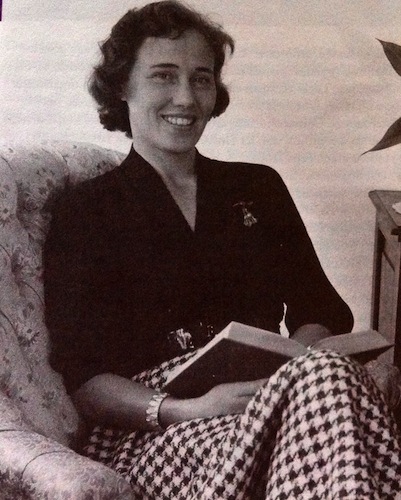
Aafje Heynis
Aafje Heynis (1924-2015) was a Dutch contralto whose father was a bus driver who sang in the local chorus. From the age of four, little Aafje sang in the affiliated children's chorus. Naturally shy, she was pulled into musical performance—she had never considered singing as a career.
I was not at all surprised, at least in the sense that there seemed to be some cosmic rightness about it, that eventually she studied with Roy Henderson, who had been the teacher of Kathleen Ferrier; and there is something of Ferrier in Heynis' voice.
What might have been the peak of Aafje Heynis' career was her sharing the solo work with Elly Ameling in Bernard Haitink's 1968 Concertgebouw recording of Mahler's second Symphony, "Resurrection."
The link is to Aafje Heynis' "O Röschen rot" via Qobuz; but if you do not have Qobuz, here's a YouTube.
Listening to the Qobuz stream through the LS6es, I was completely engrossed in the complexity of Heynis' voice—the rich, supple lower tones, the glowing midrange, and the angelic high notes. The LS6es presented her voice as an organic whole; there was not sense of "up to here, it's the midrange driver; above that, it's the tweeter." The timbral presentation was coherent. But that is to say nothing of Heynis' total engagement with the text. Her performance is full of emotion, but her emotion is never out of control. I think that this performance surely counts as a precious moment in time, forever frozen in amber.
That's in part because, while the recording was made in 1968, I think the style of her singing is definitely pre-WWII. Which only makes sense, in that someone who was getting basic vocal training during WWII was being taught by teacher who might themselves had learned the art before WWI.
OK, I just looked it up. Heynis' early teacher Aaltje Noordewier–Reddingius attended the Amsterdam Conservatory between 1886 and 1890. In other words, Mme. Noordewier–Reddingius finished her studies five years before the first performance of Mahler's second symphony—it would be very hard to get more "period-correct" than that!
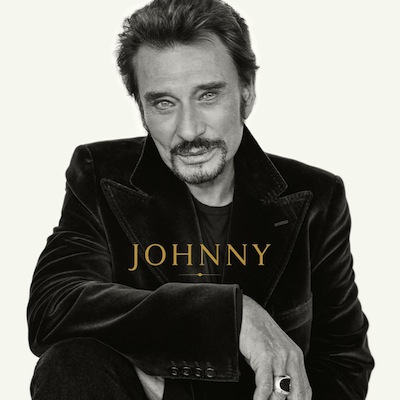
The other recording that simply knocked me out when heard over the LS6es was the posthumously released Johnny Hallyday orchestral (and at times, with chorus) album Johnny (the link is to Qobuz' hi-res).
If that name is not familiar to you, Johnny Hallyday (1943-2017) was the stage name of a Franco-Belgian Elvis imitator (rather than impersonator) who started performing at age 13. He turned professional at age 15, and he never looked back. His 80 or so recordings sold at least 80 million copies.
For this posthumous release with the London Symphony Orchestra, the producer took vocal tracks, released and unreleased, and combined them with titanic (or, perhaps, Titanic) orchestral arrangements. (There also might be just a little bit of synth-bass action going on; or perhaps not.)
Or, perhaps this is a better analogy: This is French "Blue-Eyed-Soul" singing, but in the style of the soundtracks to the Lord of the Rings movies. More than a little on the grandiose side, but that just makes turning it up very loud even more satisfying. Project producer Yvan Cassar observed:
The orchestra, for Johnny Hallyday, is the film music, it's the Westerns, it's Ennio Morricone;
but it's also the big American blockbusters, the science-fiction movies.
The producer wanted orchestral arrangements with "the power of rock," and I think he got it. So, when there are High-End Audio Shows again, perhaps some canny exhibitors will select a few of these hi-res tracks as demonstration material.
I was getting all set to tell a few of my Best and Brightests about this wonderful discovery—and lest anyone think I have gone bonkers, a long time ago Johnny Hallyday outgrew his Elvis fixation and became a real artist in his own right. Of the first few tracks on this album, one is about a political prisoner in Argentina ("Diégo libre dans sa tête"), and another is about Tennessee Williams, playwright of Cat on a Hot Tin Roof ("Quelque chose de Tennessee"). (Both those songs were written by Michel Berger.)
But when I checked the Info tab on Qobuz, I saw there was no need to tell Bob Ludwig about this recording—Bob had mastered it!
It's a Widescreen and Technicolor production, made all the more amazing because Hallyday kept his voice right up to the end. He called his farewell tour "Stay Alive!" because he was dying of cancer. His voice was pretty much intact, but his interpretations had unquestionably deepened. I will be writing much more about the phenomenon of Johnny Hallyday later.
And if you don't have a streaming service that carries Johnny, here's a YouTube of the song about the political prisoner, "Diégo libre dans sa tête."
In the meantime, if you are in the market for a stand-mounted 2-way loudspeaker with an unimpeachable BBC pedigree, and with a particular aptitude for conveying the glory of the human voice, please do check out the Chartwell LS6.
(BTW, the Chartwell LS6 also comes in a floorstanding version, with a little more bass extension and impact. Please inquire of the importer, if interested!)
To sum up: Highly Recommended.
Graham Audio Chartwell LS6 Loudspeaker
Retail: $3500
Country of Origin: England
Distribution for the Americas:
On a Higher Note
949.544.1990
San Juan Capistrano, California USA




